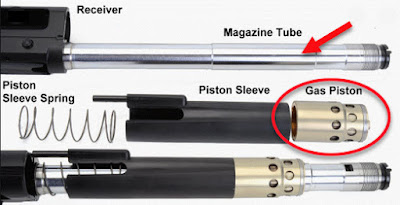Cleaning a Benchmade Bugout Knife
This post is not about disassembling a Benchmade Bugout knife. That video is here. Nor is this post about how to modify your Benchmade Bugout knife to make it function even better. That video is here. And since those already exist, why do I have to post about it? Glad you asked...
Yesterday we ground 250 pounds (114 kg) of deer meat. Some of it was cut into pieces too large to fit into the grinder. And thus, I used my clean Benchmade Bugout knife to cut the venison into smaller pieces. All good, right? Not if you add seasoning to the deer and also use your knife to clean the grinding plate. Your knife then becomes a holy mess. Next year I'm taking a straight blade! Lesson learned.
Even after hand washing my knife, there were still bits of venison and lots of seasonings stuck in all the cracks, crevices, and screw heads. So much crap, in fact, that the next day, my knife refused to open once all that junk had dried. Que disassembly and modification to my Benchmade Bugout...
This is not a paid advertisement by Benchmade, Knife Pivot Lube, or anyone else. This is just me telling you how I went about getting my Benchmade Bugout in top condition after being totally pitted out.
My first task was using a 1D common nail (very small) to get the grit out of the screw heads. I think dental tools would have worked great here. Then I used a T6 bit to get out the small screws and a T10 bit for the blade nut. FYI - T6 bits are small and not normally included in any of your general purpose bit kits. You will either have to buy a kit or just the T6 driver. Trust me here.
I then followed the second video above, using the pause button frequently, to disassemble my Bugout. I then cleaned it thoroughly with hot water and CLP. I went ahead and polished my brass washers like in the video, but I had no other modifications to perform.
I also found that disassembly was more difficult than reassembly. In the second video above, the author states that Benchmade Bugouts "can be a little bit fiddly" to take apart. Those are kind words. I found it to be frustrating. You really need more information than what was provided and the process was hidden by the author's hands. What you learn later is that the blade nut is in the shape of the letter D - to keep it from rotating. Thus, parts will not just "roll around" letting you disassemble the knife easily. The good news is that when you put everything back together, the knife snaps together very easily.
Do yourself a favor, watch the entire second video or all the videos you can before you tackle taking your Benchmade Bugout apart.
My Bugout is now clean, oiled, and ready for a quick touchup to the blade. I'm back in business!




Comments
Post a Comment